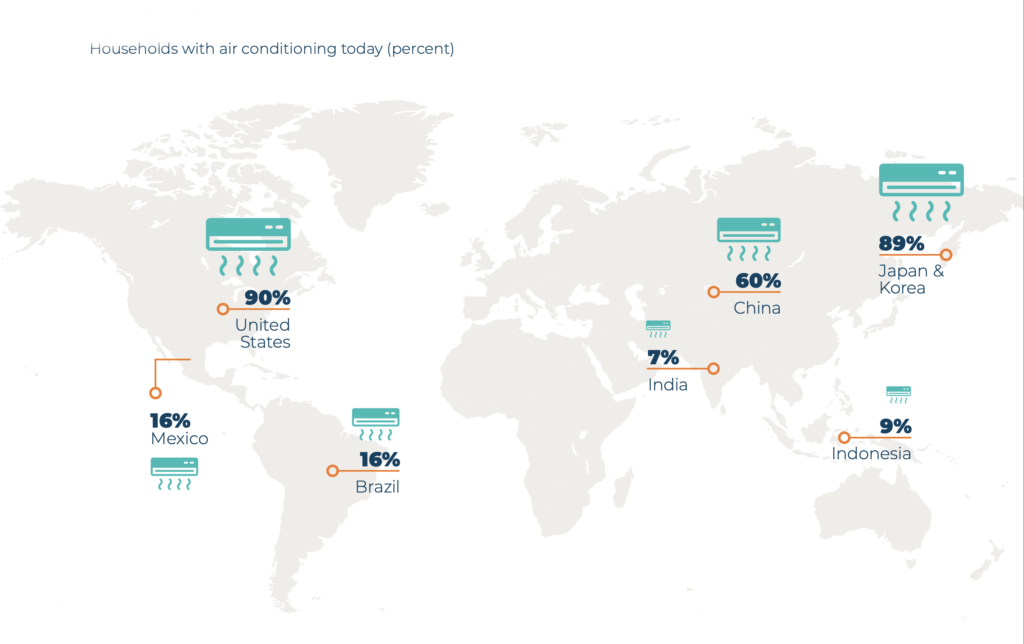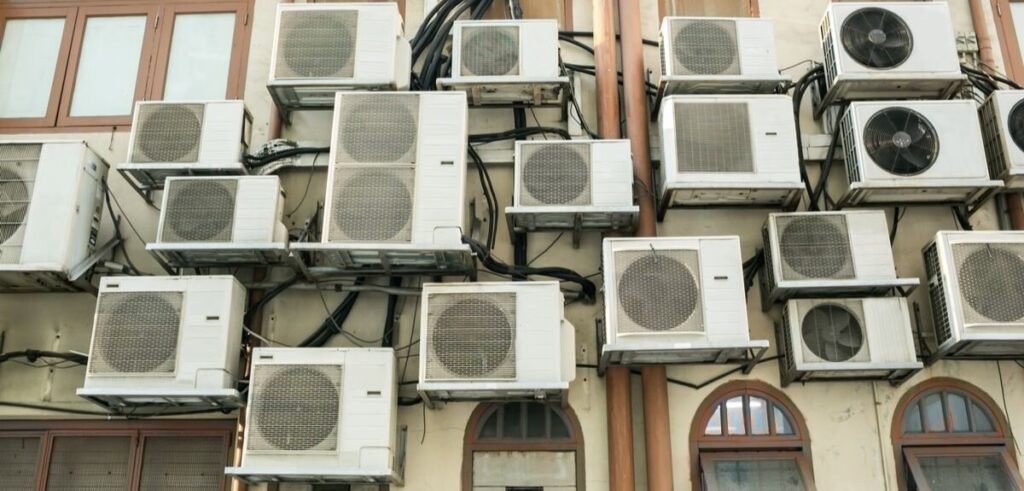Greenhouse gas emissions from air conditioners are predicted to rise as economic expansion drives efforts to manage both temperature and humidity. according to a study conducted by experts from the National Renewable Energy Laboratory and Xerox PARC.

According to the experts, the growing requirement to cool the air is both a cause and an effect of climate change. Even a small amount of moisture in the air may make people feel uneasy and even cause mold and mildew to grow in buildings.
Furthermore, managing interior humidity with commercially accessible air conditioners has three negative effects on the environment:
- They utilize a lot of power;
- they use and leak CFC-based refrigerants with a global warming potential 2,000 times that of CO2.
- the manufacturing and delivery of these systems also release greenhouse gases.
Air conditioning is responsible for the equivalent of 1,950 million tonnes of carbon dioxide released yearly, or 3.94 percent of global greenhouse gas emissions, according to the study. 531 million tonnes are attributed to energy required to manage temperature, whereas 599 million tonnes are attributed to humidity removal.

The remaining 1,950 million tonnes of CO2 originate from the leaking of global-warming-causing refrigerants as well as emissions during the production and transportation of air conditioning equipment.
Managing humidity using air conditioners has a greater impact on climate change than controlling temperature. The problem is projected to intensify as customers in other nations, notably India, China, and Indonesia, install a large number of air conditioners in a short period of time.

Climate change is changing global ambient temperatures and humidity, making it warmer and more humid. The expected increase in global humidity will have a greater impact on emissions than the increase in global temperatures.
To get a transformational change in efficiency, we need to look at different approaches without the limitations of the existing one.
Reference- Journal Joule, Clean Technica, World Economic Forum Data, Forbes, BBC






